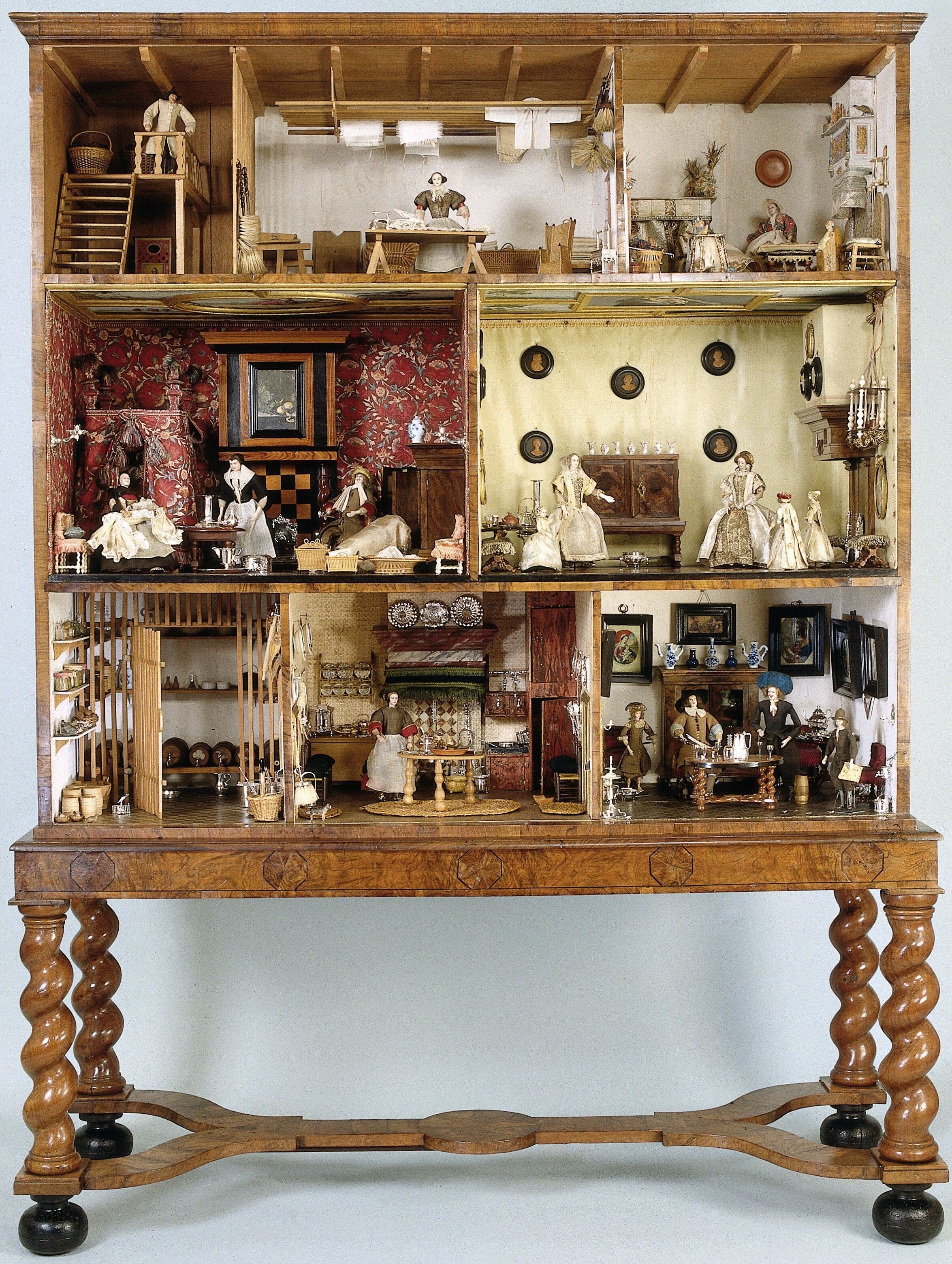A Brief History of Early Dollhouses
(The famous dollhouse of Petronella Dunois, c.1676. Rijksmuseum, Amsterdam. )
The history of dollhouses is at odds with the modern notion that dollhouses are only for children’s play. Did you know that dollhouses were originally designed for adults?
In the beginning, dollhouses had only two purposes: display and education. First built in the 17th century in northern Europe, primarily in Germany, Holland, and England, they were closely associated with wealth and served as markers of social class and status.
Dutch Cabinet Kitchen House from late 17th century, Victoria & Albert Museum
As Faith Eaton explains in The Ultimate Dolls House Book, the German word dockenhaus meant not dollhouse but “miniature house.” And a miniature house was not a house to play with. In Holland, these exhibits of wealth were called “cabinet houses.”
The front of the house would open like a china cabinet on hinges that could be closed and locked. Inside cabinet houses, people could both show off and conceal their collections of expensive miniature objects.
If you want to see a lovely example of an early Dutch cabinet house don’t miss the 2017 movie, The Miniaturist, or its later three part series adaptation by BBC.
Fully furnished cabinet kitchen made in Holland between 1670 and 1700
By the 17th century, the dollhouse transitioned into a more useful teaching method called Nuremberg kitchens.
These houses, which were all metal, existed to teach a young girl how to run a household. “Nuremberg kitchens” might contain a hearth, cooking pots, a straw broom.
All about learning rules, a Nuremberg kitchen was the opposite of a dollhouse as a dream world of fantasy. These kitchens reached the height of popularity around 1800. In the early part of the century, they were assembled by artisans working from their homes who produced a remarkably large volume of toys made by hand. By the later part of the century, they were being manufactured in even greater numbers in industrialized factories by such firms as Moritz Gottschalk, Gebruder Bing, and Marklin.
An Early One Room Nuremberg Kitchen, Theriaults
By the 18th century, we see the development of what has come to be referred to as the Victorian dollhouse, also called a “baby” house. These houses were replicas of the house of their owners and were not intended for play either but instead as a means to reflect wealth.
A Large George II Mahogany Palladian “Baby” House, Mid-18th century. “Baby” is another word for doll.
This early English dollhouse was brought to antiques roadshow and it caused a national stir. It was valued at over 150,000 pounds.
The doll's house was built in 1705 on the Isle of Dogs for Miss E Westbrook. It has been in the owner's family ever since, passing down the female line for generations
Only a handful of doll's houses from the period have survived, but this antique - dubbed the Westbrook baby house - is exceptionally well-preserved, with the dolls in their original clothes.
Looking through a window in a Georgian House, England. Private Collection. Photo by Gavin Ashworth
When the idea of play as a valuable activity met the industrial ability to mass produce dollhouses, then, obviously, the dollhouse suddenly became an object of childhood and the dollhouse became a toy.
At first, most toy dollhouses were produced in Germany and were exported to America and Britain. But WWI put a stop to that, and American companies began manufacturing dollhouses.
Today, doll’s houses, dollhouses, or as the English refer to them, Baby Houses, stir the imagination and fill the joyful play hours of many a young mind, but it is also a thriving hobby for many adult dollhouse enthusiasts and serious collectors of antiquities throughout the world.
(If you want to explore a more in-depth history of dollhouses, an excellent resource book is A History of Doll’s Houses by Flora Jill Jacobs.)







